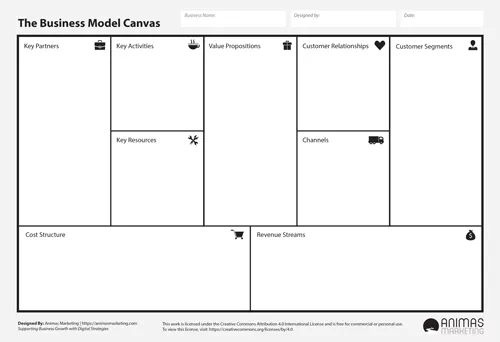There’s

But this freedom can also be very intimidating. If you’re not aware of the paradox of choice, it goes like this: past a certain point, having additional options can end up limiting what you achieve, because you don’t know how to make a firm decision. You’re left stuck at a crossroads, having no idea which road leads to your destination.
So when you’re trying to grow an eCommerce store, one of the most important things you can do is commit to a
You only have so much time in the day, and you have enough other things to focus on without trying to cover every tactic in the playbook.
To make things simpler, let’s take a look at 3 reliably-effective techniques for scaling online stores that fully warrant your undivided attention and effort:
Run targeted Facebook video advertising
Paid advertising is a richly-complex matter. There are different payment methods and scales (pay-per-click versus pay-per-impression, for instance), countless viable platforms, and numerous content formats to contend with.
You could spend months trawling through detailed guides and blog posts in an effort to choose the right options — but I don’t recommend it.
Instead, here’s my suggestion: carry out some carefully-targeted video advertising on Facebook.
Why Facebook? Because it has the largest reach of any social media platform, its sheer weight and range of user data
And why video? Because it gets more attention and engagement than any other format. It stands out the way other formats can’t (even on mobile, given the pace of modern internet connections), and it allows you
You can showcase products, introduce your brand, highlight specific offers — it’s up to you.
To get started, check out these varied ad examples. They demonstrate various creative approaches you can take to creating a great Facebook video ad.
You should also learn everything you can about how to segment Facebook
Create a hub of hyper-relevant content
Content marketing for
You’ll often notice the scattergun strategy at work: writing about anything and everything that seems vaguely relevant, distributing it at volume without any clear
It’s a waste of time, money, and effort.
Instead, a smart content marketer will push towards a hub of hyper-relevant content.
What’s a hub in this context?
Put simply, it’s a landing page directed towards common queries, but instead of plain content, it’s filled with links to dedicated answers on the same domain. For example, you could have a main
What’s the benefit of this model?
Well, it’s supremely useful for both general usability and SEO. Every fresh page offers new ranking potential, but since the pages are all linked together, they provide cumulative value. Additionally, you can market the hub as a comprehensive resource, establishing your company as a trustworthy industry expert.
Over time, such a hub will only increase in value. Fresh content will give it a boost, and you can renew old content to keep it viable (updating an old guide for 2019, for example).
Instead of throwing out numerous pieces in the hope that one of them will stick, it’s about tying everything you create together so it all contributes something to your success.
Pursue customer loyalty and referrals
Turning an online store into a huge brand is all about achieving repeat business, which means painstakingly avoiding the churn — the frustrating process of losing existing customers and needing to bring in new customers to replace them.
If you can’t overcome the churn, then you’ll struggle to find a lasting growth. Instead, your store’s success will wax and wane depending on the day, making it extremely difficult to plan ahead.
Consequently, a core part of your overall marketing strategy must involve cultivating customer loyalty. This is easier said than done, though, because online buyers have so many options, and so little incentive to get attached to businesses that can’t reliably offer them
In addition to using a reliable CRM, you need to find something unique to provide — something that sets your brand apart.
If you’re fortunate (or skilled) enough to have the best products around, you can use that level of quality. Otherwise, you can try to offer the best service, or the most useful recommendations, or the most engaging social media activity, or even the most stylish website design. Couple your USP with an effort to incentivize repeat business — perhaps through
The next step is to use your loyal customers to refer new customers. Not only do
(Note: before you do this, confirm that your
If it doesn’t, consider a move to a more suitable storefront, because referrals can (and should) take place across any and all types of social media.)
At this point, you’ll need to implement a strong referral scheme that benefits both those referring you and those referred (e.g. giving each person a sizable one-time discount).
You can also simply ask your customers through social media to mention you to their friends and family members, noting that your store is new and you’d appreciate any additional attention. Since they like you enough to buy from you, they’ll likely want to help out.
If you’re looking for 3 consistently-effective techniques for scaling your online store, I suggest you go with these above all others. The advertising will bring in some relevant visitors at low cost, the content will start turning your brand into a

Free Business Model Canvas

Free Business Model Canvas
Is Your Business Being Found Online?

Free Digital Marketing Report ($150 Value)
Want to know how your business stacks up against the competition?



0 Comments